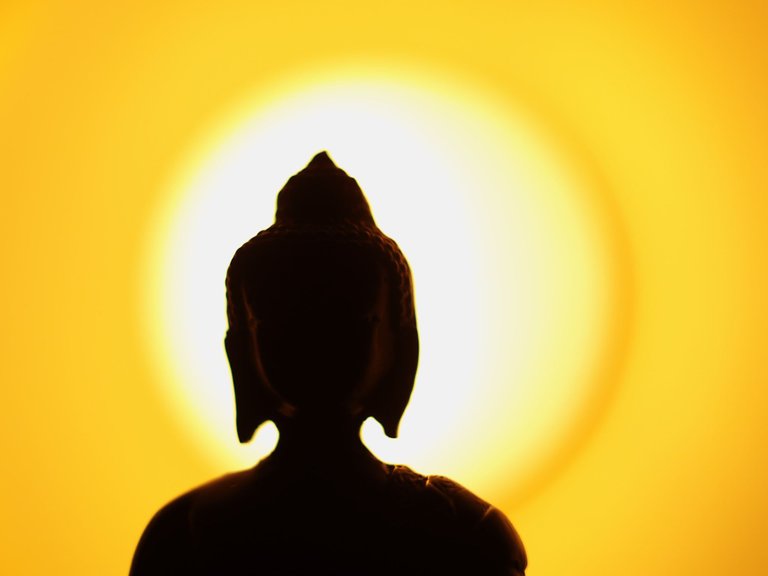What is the Mahayana Path?
The Mahayana Path is a belief that one can obtain liberation, enlightenment or nirvana in a single lifetime. It is the largest of the three traditions at about 55% practicing it while 35% practice Theravada and 6% practice Vajrayana. This path involves transforming our ordinary gross minds into minds that can encompass the supreme thought of bodhichitta. Bodhichitta is the wish to reach nirvana/enlightenment as fast as possible in order to help all sentient beings with great compassion. It also requires removing attachments and the "self". It is said that because of our delusions in thought it can take a long time for this, multiple lifetimes even. But as you might expect you must understand the obstacles that we face to overcome them right? That's what the Mahayana path teaches. You are expected to get a good grasp on these to develop the supreme state. This state to be reached is discussed in the Sublime Continuum (Ratnagotravibhaga Sanskrit text or Buddha-Nature).

CC0 Photo: Jan Kromer
The Obstacles
Attachment: The idea that we need inanimate and animate objects which hinders the Buddha nature within. An article I wrote comparing fatherhood's natural love to attachment can be found here.
Anger/Hatred: This delusional emotion that builds within us only leads to suffering for our selves. It also hinders the Buddha nature within us.
Ignorance: We cannot obtain a Buddha like nature if we don't try to find the truth or realities of everything.
Three Poisons: Ignorance, attachment, and aversion keep us and all sentient beings cycling through samsara, or the endless cycle of rebirths.
Imprints of Ignorance: Delusion from ignorance leaves a thick layer that we must dig through to reach the truth.
Relinquishing Subtle object: This is to be removed though the smaller vehicle, or Theravada. We must cast aside the object of abandonment so that we can work toward the goal of buddha nature.
Relinquishing Meditation Obstacles: Through the smaller vehicle, or Theravada, we must remove the obstacles that hinders our meditation practice.
Afflictions causing obstacles: The above seven obstacles hinder us in our reach for enlightenment based on the Mahayana Path. These must be relinquished. But we must start from the bottom to get to the top. We do this to reach our full potential within our minds.
Abandoning the 8th, 9th and 10th grounds of the path: Immovable, Intelligence and Doctrine.
Like rotten cloth that swathes a golden buddha, the objects of abandonment on the Hinayana path must be forsaken in order for the true nature of our minds to shine through."
If some of the above do not make complete sense, hopefully my lessons to come will clarify.


Banner By @justcallmemyth, Minnow Support Project
Come join us in the discord channel: Start by clicking here: https://discord.gg/HYj4yvw
Once there feel free to DM me @nicnas for any assistance or guidance needed.
Thanks for sharing this. I was watching a Matt Kahn video that talked about how when we put "meaning" to things that happen is where we get stuck. Especially when we are listening to the monkey mind chatter about what's not working in our favor. Who's to say what is good or bad?
I am glad you enjoyed it. That is very true. Its all perspective right?
Mahayana means The Great Vehicle, right? I really can't remember.
Yes that it what it is referred to as.
Is the Sublime Continuum the subject of the next article?
Thanks
Possibly if thats something you would like to read more about.
The sentence read as if it was going to be discussed after the image, but then it turned to obstacles, so wondered if it was a previous post or future one.
Yes, words are important, and in such experiences our language sometimes needs to borrow terms from philosophies that are themselves well defined so that existing terms do not bring unwanted baggage with them. I imagined when reading the term that it corresponds to the Tibetan Rigpa, but possibly not, so I shan't assume.
Sorry for my ignorance on that. Maybe thats why I didn't go into clarification in the post, or maybe b/c it was late and i was tired and lazy. Neither is acceptable. In the context of my post above it could relate to the Ratnagotravibhaga Sanskrit text. Though it is sometimes a term describing Buddha-Nature in general.
OK, now I understand. Sublime Continuum is the name of the treatise:
http://www.rigpawiki.org/index.php?title=Sublime_Continuum
Now I need to sleep - and awake in 4 hours!
I hope you have a great sleep then!
I might have missed going into detail about it. This topic is a little hard to grasp for me. I usually write about things that i have a good grasp of, but this time i felt I wanted to learn about it while writing. Something that i learned a long time ago was that you learn more from teaching that you do from studying. This had rung true for me for many years. Maybe my lack of understanding of this topic is weak. I would to to write next on the Obstacles of meditation. I think the most amazing thing about your comments are that they really make me think. You wont allow me to be lazy. haha. Please keep doing this. I love your puzzles as well. Anytime ones mind can be worked it is an amazing thing. I think i meant to italicize it instead of bold as well.
nice post.
upvoted
-=- -=-
j
--______--
This post received a 2.1% upvote from @randowhale thanks to @nicnas! For more information, click here!